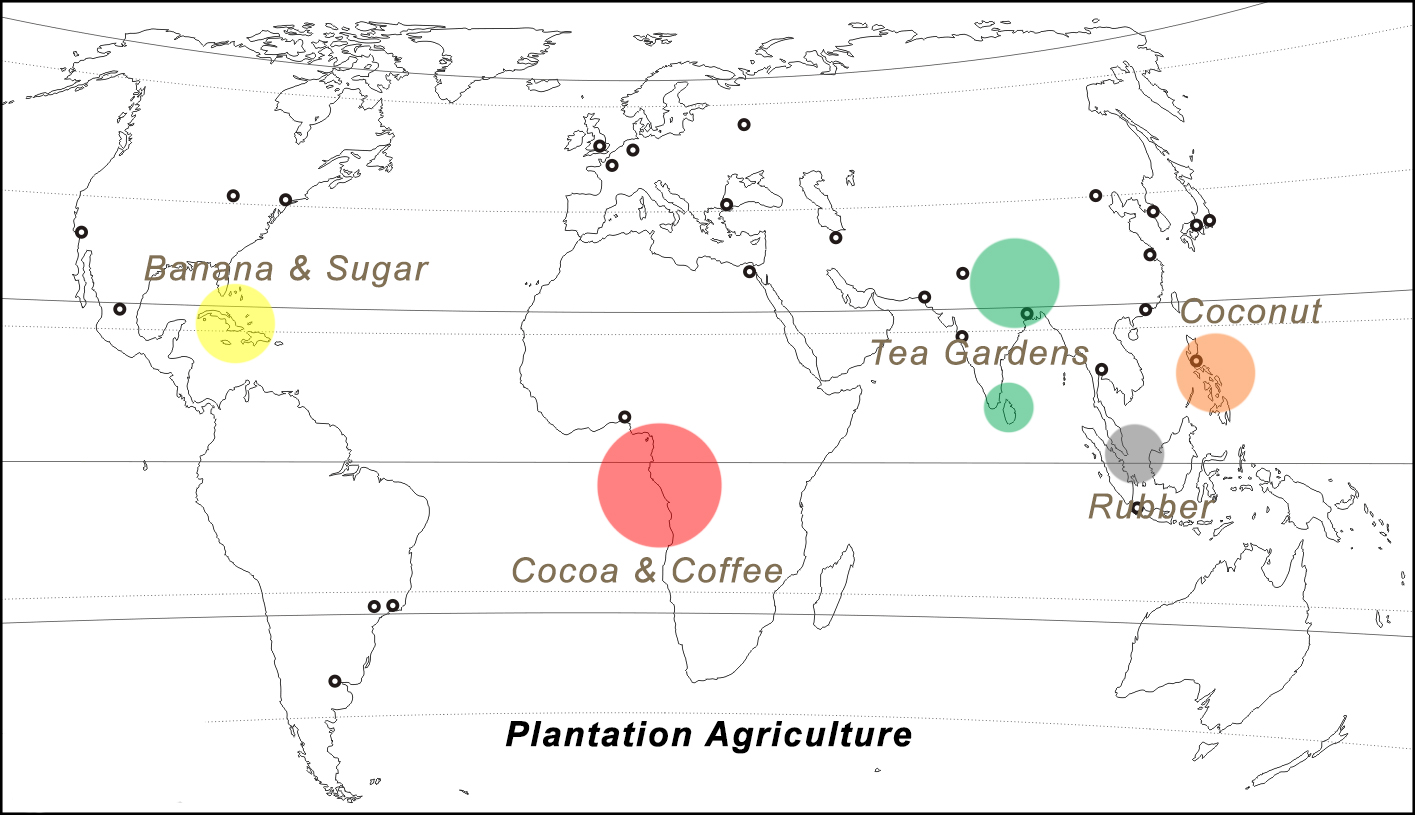1. Choose the right answer from the four alternatives given below.
(i) Which one of the following is not a plantation crop?
(a) Coffee (b) Sugarcane (c) Wheat (d) Rubber
(ii) In which one of the following countries co-operative farming was the most successful experiment?
(a) Russia (b) Denmark (c) India (d) The Netherlands
(iii) Growing of flowers is called:
(a) Truck farming (b) Factory farming (c) Mixed farming (d) Floriculture
(iv) Which one of the following types of cultivation was developed by European colonists?
(a) Kolkoz (b) Viticulture (c) Mixed farming (d) Plantation
(v) In which one of the following regions is extensive commercial grain cultivation not practiced?
(a) American Canadian prairies (b) European Steppes (c) Pampas of Argentina (d) Amazon Basin
(vi) In which of the following types of agriculture is the farming of citrus fruit very important?
(a) Market gardening (b) Plantation agriculture (c) Mediterranean agriculture (d) Co-operative farming
(vii) Which type of agriculture among the following is also called ‘slash and burn agriculture’?
(a) Extensive subsistence agriculture
(b) Primitive subsistence agriculture
(c) Extensive commercial grain cultivation
(d) Mixed farming
(viii) Which one of the following does not follow monoculture?
(a) Dairy farming
(b) Mixed farming
(c) Plantation agriculture
(d) Commercial grain farming
2. Answer the following questions in about 30 words.
(i) Future of shifting cultivation is bleak. Discuss.
Ans. Shifting cultivation is also called as slash and burn agriculture. After sometime (3 to 5 years) the soil loses its fertility and the farmer shifts to another parts and clears another patch of the forest for cultivation. One of the major problems of shifting cultivation is that the cycle of Jhum becomes less and less due to loss of fertility in different parcels.
(ii) Market gardening is practiced near urban areas. Why?
Ans. Market gardening and horticulture specialize in the cultivation of high value crops. It is both labour and capital intensive, therefore to yield profit market gardening is located near urban areas where high income group of consumer are located.
(iii) Large scale dairy farming is the result of the development of transportation and refrigeration.
Ans. There is no off season for dairy farming. Since the urban and industrial demands for milk and dairy products are always high. The development of transportation, refrigeration, pasteurization and other preservation processes have increased the duration of storage of various dairy products.
3. Answer the following questions in not more than 150 words.
(i) Differentiate between Nomadic Herding and Commercial Livestock Rearing.
Ans.
| Nomadic Herding Rearing | Commercial Livestock Rearing |
| It is practiced by nomads who move from one place to another in search for food, water and shelter. | It is practiced by people who are well settled. |
| Quality of the animals is poor and so is the produce which meets the local requirement of the nomads. | Animals are reared on big ranches, and the animals are well cared. |
| Output is less, hence it is purely for self consumption. | Output is large and the products are processed and exported. |
| It is generally practiced in the regions of tropical Africa, Sahara and Asiatic deserts, mountainous areas of Tibet and Andes and in the Arctic and sub-Arctic areas. | New Zealand, Australia, Argentina,
Uruguay and United States of America are important countries where commercial livestock rearing is practiced. |
(ii) Discuss the important characteristic features of plantation agriculture. Name a few important plantation crops from different countries.
Ans. The characteristic features of plantation agriculture are:-
- Large estates / property for plantations
- Large capital investment
- Requires managerial and technical support
- Scientific methods of cultivation
- Single crop specialization
- Cheap labour
- And a good system of transportation which links the estates to the factories and markets for the export of the products.
Some of the important plantation crops are:- cocoa and coffee plantations in west Africa, tea gardens in India and Sri Lanka, rubber plantations in Malaysia, sugarcane and banana plantations in West Indies, coconut and sugarcane plantations in the Philippines.
